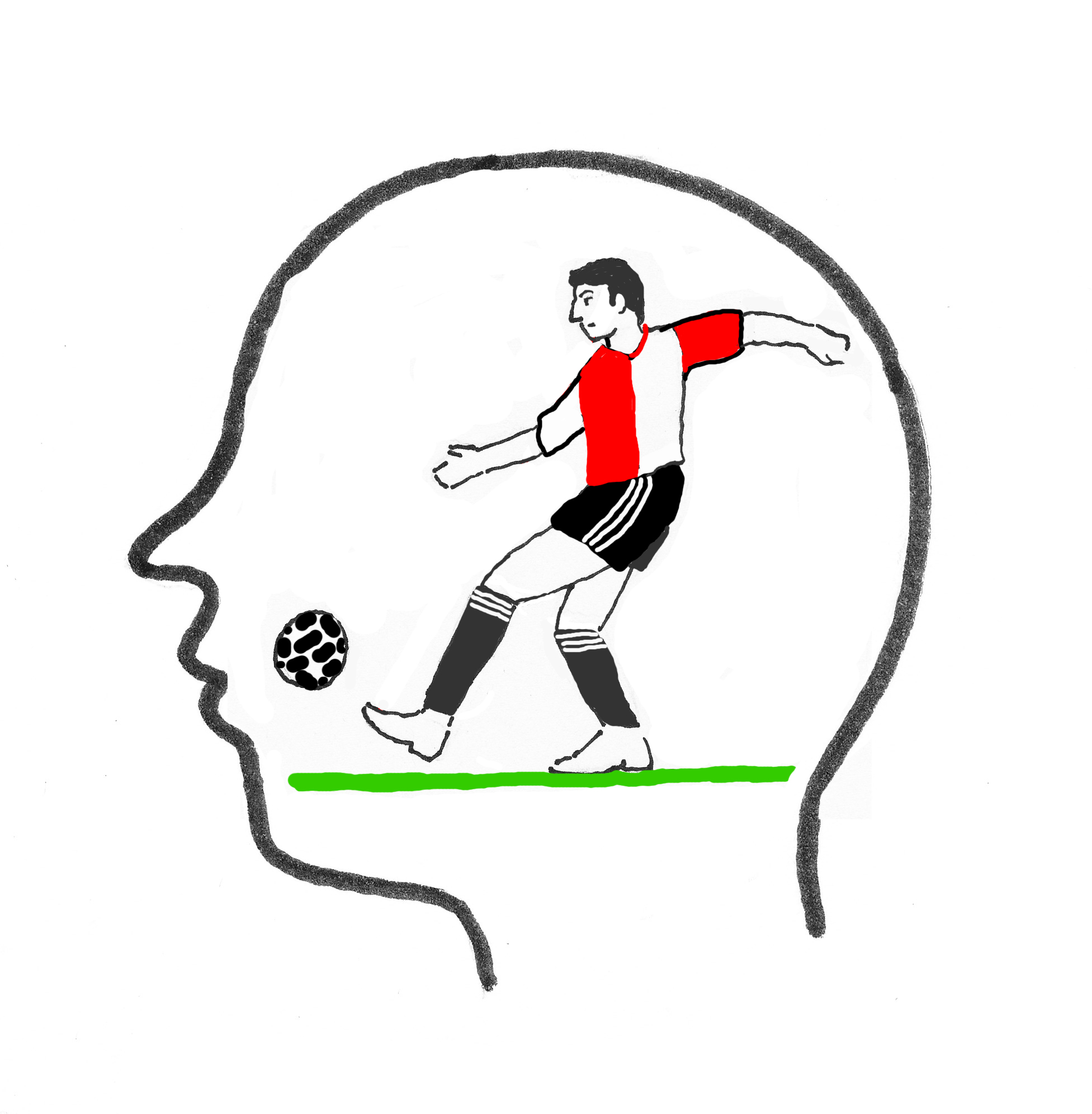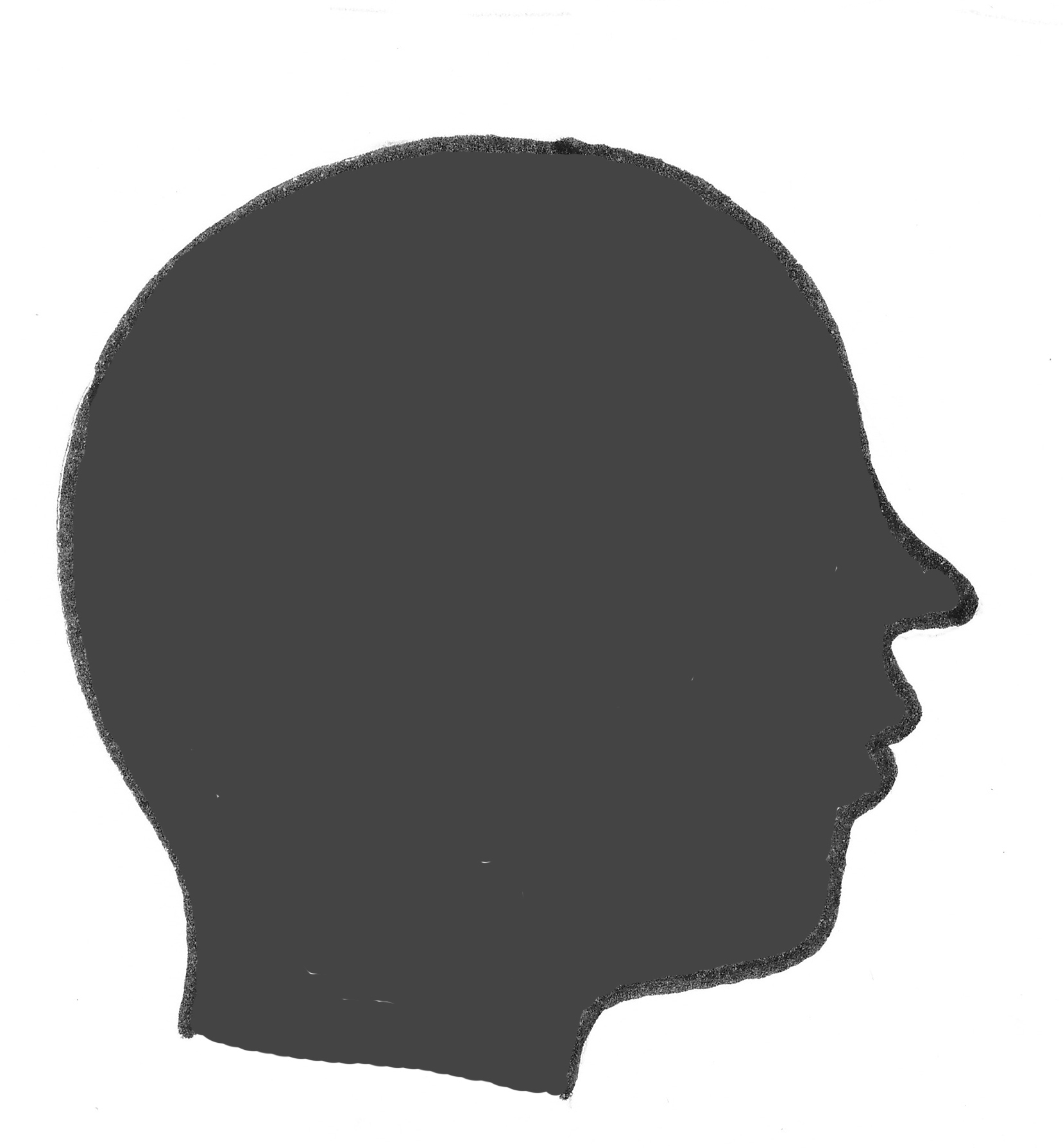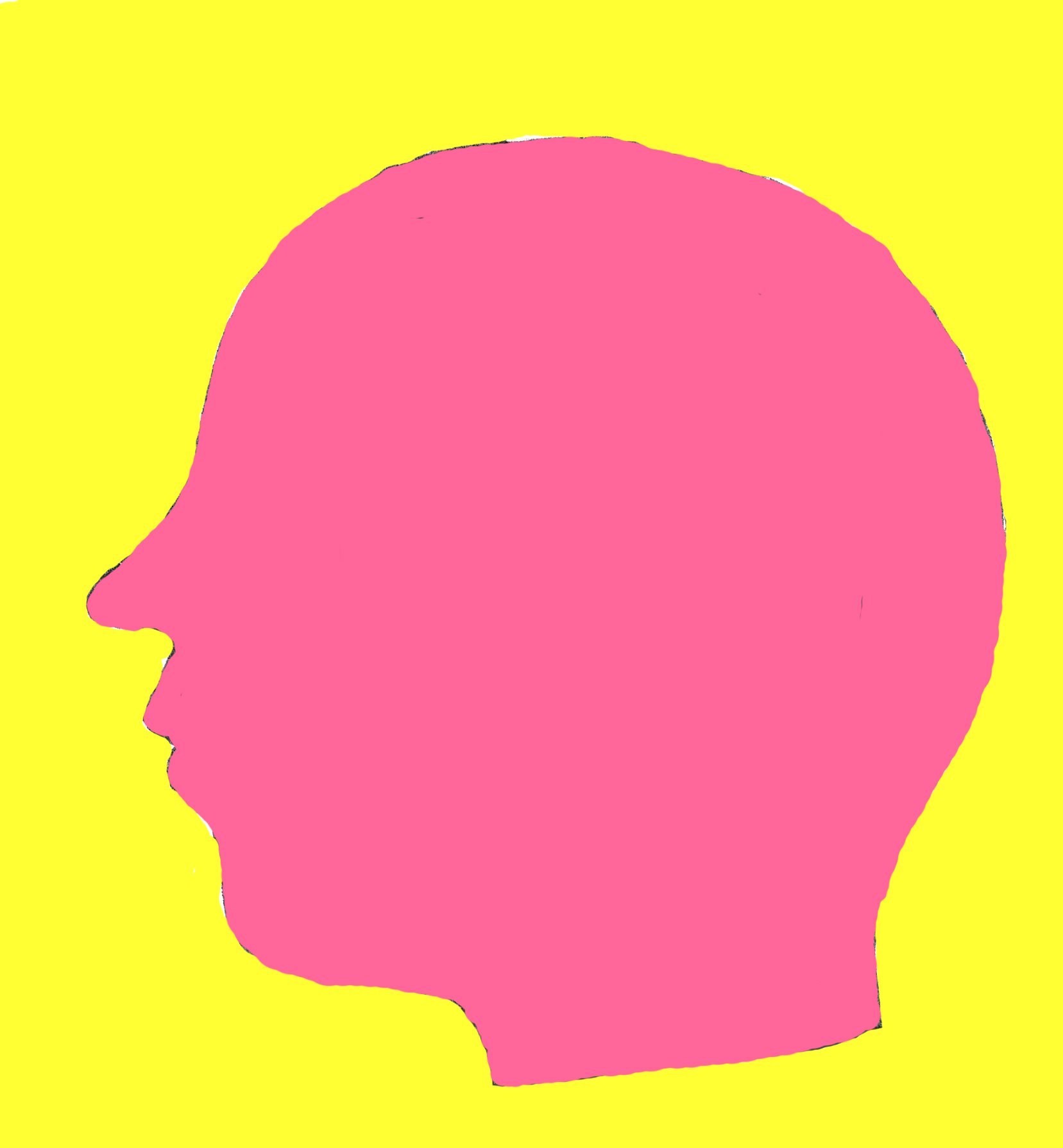CHAPTER 1 | THE VERY FIRST PORTRAIT

Once upon a time there was a young Greek man who went on a long and dangerous journey. The day before he left his girlfriend Dibutade saw the shadow shape of his head on a wall . She thought: “If only I could only keep seeing his profile while he is away!”. She picked up something sharp or a piece of chalk or maybe lipstick and drew the outline of the shadow on the wall while her dog watched. According to mythology this was the first portrait in art history. Many paintings were later made about this story.

The following exercise is specifically for children aged about 9, and is meant to be done in pairs. The person drawing then becomes the model, and vice versa. Otherwise, proceed to Chapter 2.
Exercise 1: Let your model rest with one ear on a large white or colored drawing sheet on a table (image above). Stroke slowly and gently with your pencil the forehead, nose, lips, chin, the top and the back of the head. Follow every curve and concavity as closely as possible. Hold your pencil at the end en all the time upright. Your model must of course lie still and not talk…
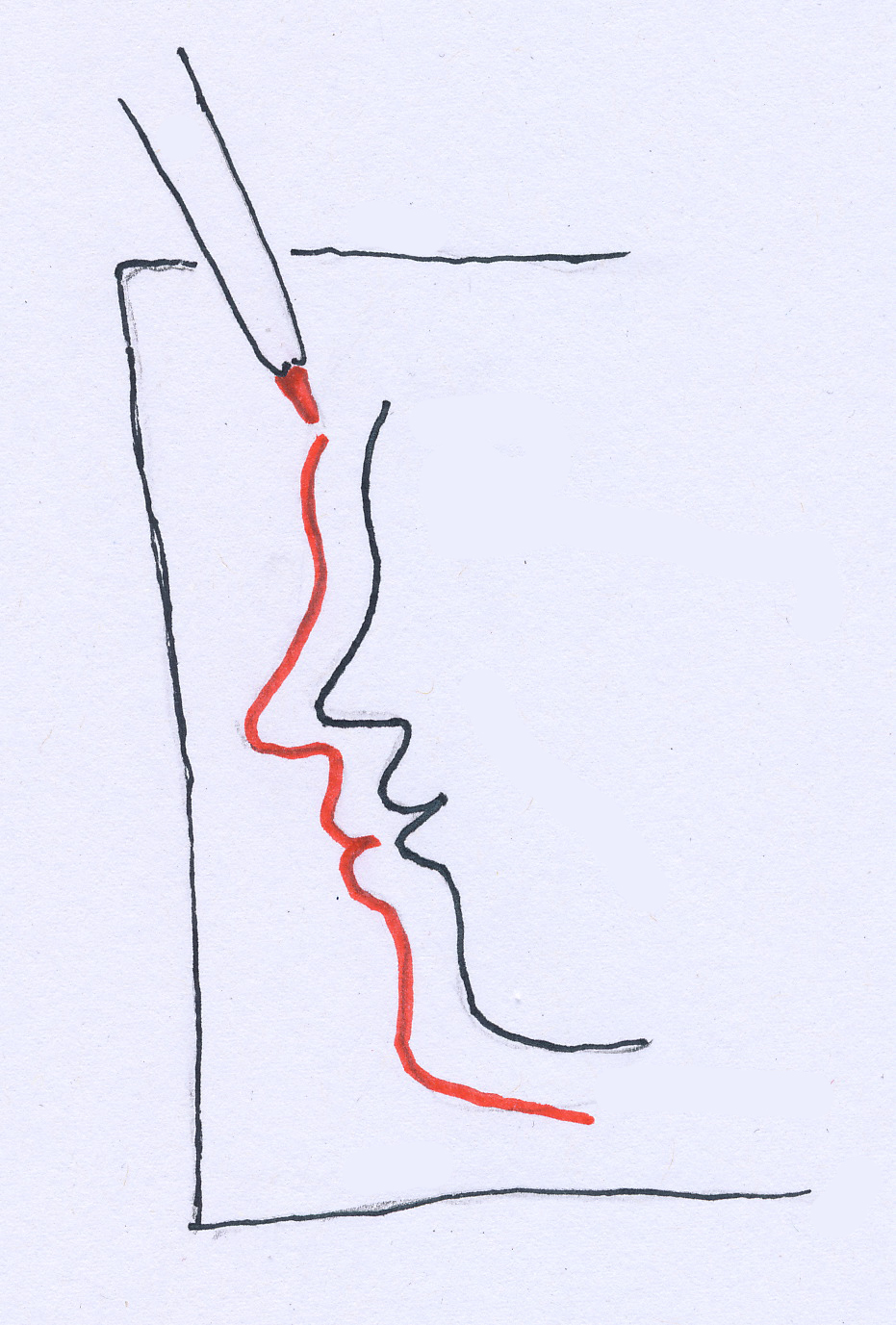
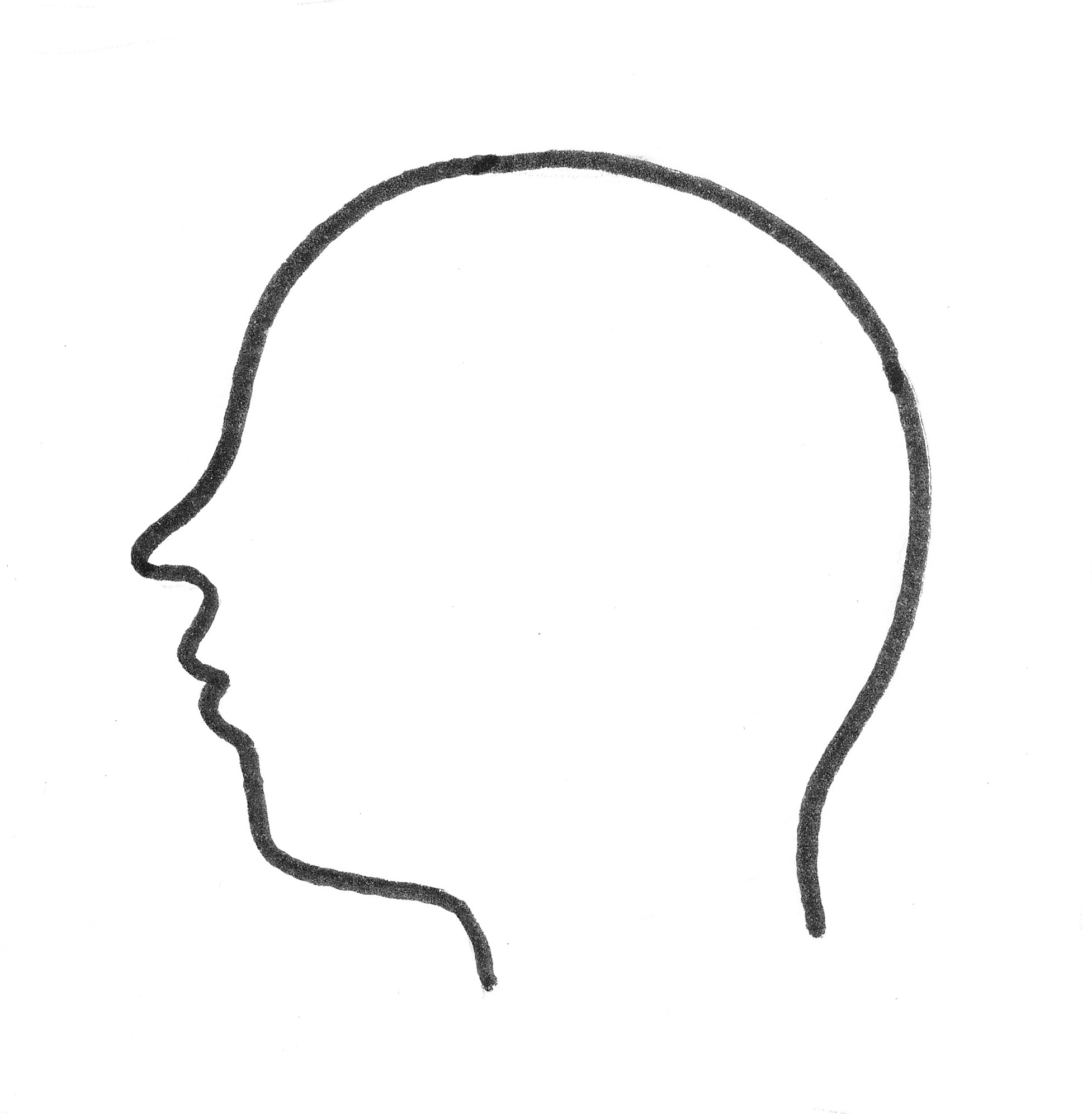
When you’re done, check if the result is okay. You may have slipped in some places. If you are satisfied you can color the outline or make it clearer with a fine liner/marker.

Exercise 2: Inside the head you can draw, write, paint or even stick something, something that suits that person. This way it seems like he or she is thinking about that. You can also cut out the drawn head as a shadow shape (silhouette) and stick it on another (colored) sheet. I show you a few examples of possibilities:


